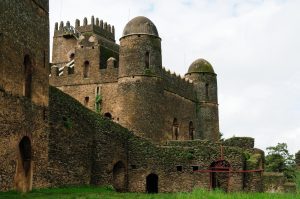Addis Ababa, the capital of Ethiopia, is situated at an elevation of around 2,400 meters, making it the third-highest capital globally. Furthermore, it is located in close proximity to the geographic center of the country. In 1887, Emperor Menelik II established a city known as “New Flower,” which has significance in present times. In a span of just over a century, the city has seen a remarkable transformation from a state of nonexistence to a bustling metropolis housing a substantial population in the millions. Due to its high elevation, the location has a consistently agreeable climate throughout the year, sometimes punctuated by intermittent rainfall.
Awash National Park

Situated around 200 kilometers away from Addis Abeba, this national park exhibits a scenic landscape inside the arid acacia savanna of the Rift Valley. The southern boundary of the park is characterized by a remarkable canyon, which has been sculpted by the Awash River to a depth of 150 meters. This canyon also has a notable waterfall. To the north, one may see the rugged contours of Mount Fantelle, an inactive volcanic peak whose elevated crater above the adjacent flora.
Additional points of interest are Lake Beseka and the Filwoha Hot Springs, both of which provide a variety of visually captivating translucent blue pools. The allure of the natural environment and avian fauna surpasses that of the approximately 80 animal species found in the Awash region. Awash National Park, with a diverse array of over 450 species, has garnered recognition as a prominent avian destination inside Ethiopia. The Ethiopian cliff swallow and the yellow-throated serin are two species that are now at risk of extinction.
Axum

This intriguing town served as the center for the Axumite Empire, a highly developed and influential civilisation throughout the period spanning from the first to the seventh century AD. The Axumite Empire played a crucial role in worldwide trade during this time.
The inclusion of rumors suggesting that the town perhaps served as the court of the Queen of Sheba and the last resting place of the Ark of the Covenant adds an additional layer of complexity to its extensive historical narrative. Regardless of the veracity of these assertions, it is certain that Addis Ababa has significant religious importance for Ethiopian Orthodox Christians. Moreover, the city is home to a remarkable abundance of ancient relics, some of which have been discovered and are on display, while others remain undiscovered.
Gonder

Until the commencement of the 17th century, Ethiopia maintained a “mobile capital” as per the accounts of local inhabitants. Subsequent to his ascension to the throne in 1632, Fasilidas designated Gonder as his capital, a status that endured for the subsequent two centuries. Furthermore, Fasilidas not only facilitated a period of relative tranquility in Abyssinia’s tumultuous past but also constructed a grand fortress at this strategic location, a significant portion of which remains intact in the present day. The extension was carried out by the successors of the individual in question. The architectural grandeur of the turreted citadels, expansive banqueting halls, and opulent bathhouses inside the fort unmistakably convey the historical importance of this Christian kingdom four centuries ago.

